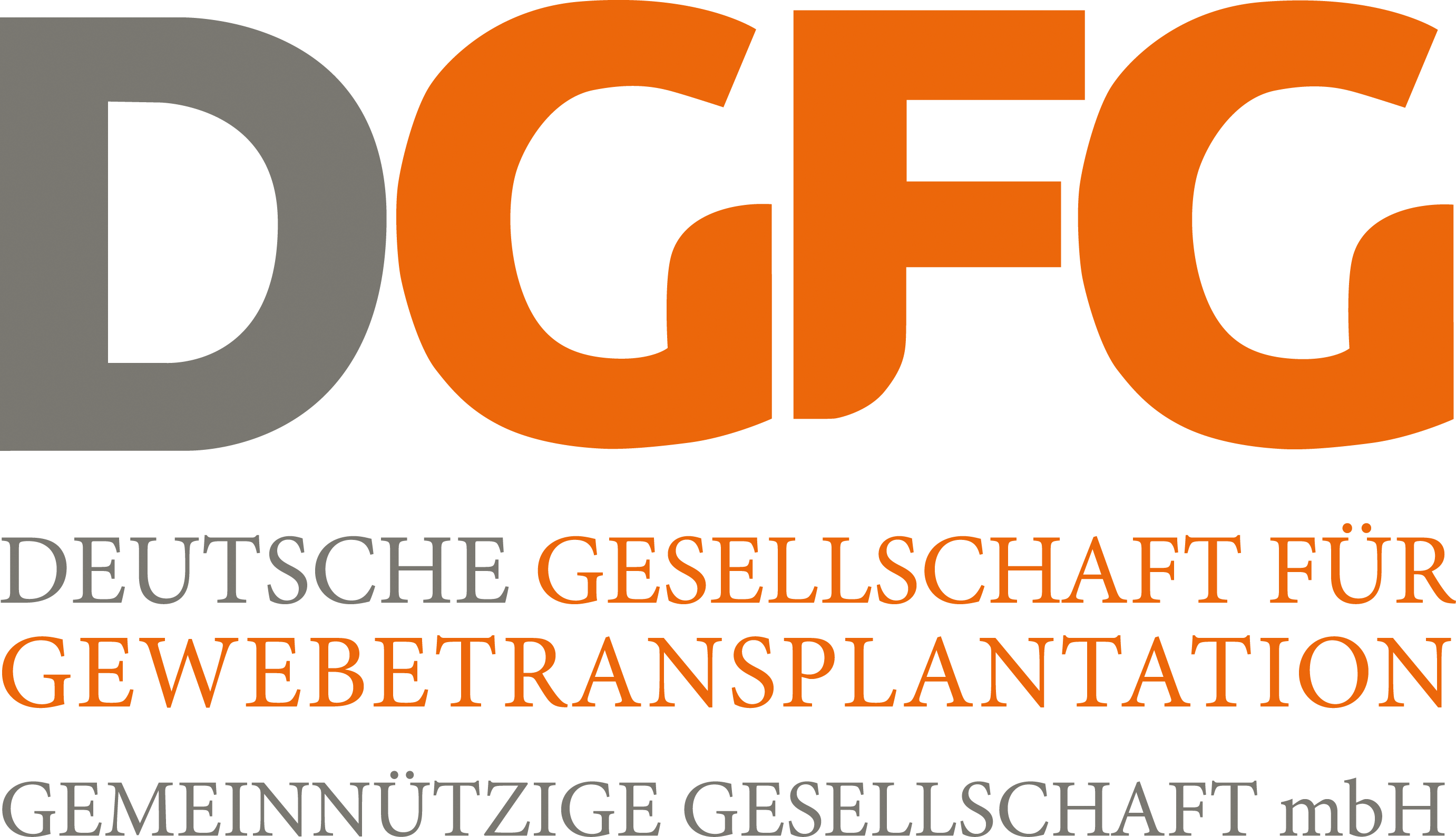AmnioClip-plus for ophthalmology
The AmnioClip-plus (AC+) is used in ophthalmology to treat eye surface disorders, to preserve the eye, maintain or improve vision and it is useful for therapy of dry eye syndrome. AC+ can be applied in most situations where the use of amniotic membrane is common practice today, e.g.
- Persistent epithelial defects including neurotrophic corneal ulcers
(on host cornea/corneal transplants) - Reconstructions of conjunctival injuries
(e.g. burns or chemical burns, perforating trauma) - Pterygium surgeries
- Symptomatic bullous keratopathy
- High-risk keratoplasty for limbal stem cell deficiency
Advantages compared to conventional amniotic membrane transplantation (AMT)
With the AmnioClip-plus surgical trauma can be avoided in contrast to conventional AMT and suture-associated procedures. The treatment is repeatable and suitable for therapy of protracted/chronic defects.
Manufacture and application
The medicinal product AmnioClip-plus, cryopreserved, DGFG has been approved by the Paul Ehrlich Institute (PEI) under the number PEI.G.11968.01.1. The amniotic membrane is clamped in the ring system in such a way that after application, the chorionic side lies on the surface of the eye to be treated. If desired, the reverse orientation can be ordered. The AC+ is inserted into the eye locally under drip anaesthesia. The size of the AC+ allows optimal positioning on the eye surface and prevents slippage. The treatment area should not exceed the size of the AC+. The AC+ can remain on the eye for up to 14 days. Repeated treatments are possible with a new AC+ for a further 14-day duration.
Package leaflet
The AC+ is delivered deep-frozen in a sterile container and is individually customized for every procedure. The AC+ must be stored at temperatures below -60°C (freezer or on dry ice) until 30min prior to the surgery. It must be used within six hours after thawing and must not be refrozen once thawing has begun. The maximum storage time (with continuous temperature monitoring of the freezer) is one year from the date of preparation of the amniotic membrane and only if the AC+ has been transferred to a suitable -60°C freezer in the sterile container immediately after receipt. The medicinal product is intended for single use only. The contents of a package are intended exclusively for use on a single patient.
International allocation
A transfer of transplants to international locations is possible if the import is approved and all necessary documents are available. The tissue allocation office and the quality management of the DGFG will help with the clarification and implementation.
The delivery time for orders outside Germany is dependent on the distance and country-specific requirements. The DGFG makes every effort to keep waiting times as short as possible. For increased flexibility, it is possible to store several AC+ on site in a suitable freezer (< -60°C). The DGFG charges an expense allowance for the provision of the transplants and the transport costs for the delivery.
[/av_textblock]
[/av_two_third]
[av_one_third min_height='' vertical_alignment='' space='' custom_margin='' margin='0px' row_boxshadow='' row_boxshadow_color='' row_boxshadow_width='10' link='' linktarget='' link_hover='' padding='0px' highlight='' highlight_size='' border='' border_color='' radius='0px' column_boxshadow='' column_boxshadow_color='' column_boxshadow_width='10' background='bg_color' background_color='' background_gradient_color1='' background_gradient_color2='' background_gradient_direction='vertical' src='' background_position='top left' background_repeat='no-repeat' animation='' mobile_breaking='' mobile_display='' av_uid='av-2e1hch']
[av_image src='https://gewebenetzwerk.de/wp-content/uploads/2019/07/AmnioClip_eng.jpg' attachment='9363' attachment_size='full' copyright='' caption='' styling='' align='center' font_size='' overlay_opacity='0.4' overlay_color='#000000' overlay_text_color='#ffffff' animation='no-animation' hover='' appearance='' link='manually,https://gewebenetzwerk.de/wp-content/uploads/2021/07/AmnioClip-plus_cryopreserved.pdf' target='_blank' title_attr='' alt_attr='' lazy_loading='disabled' id='' custom_class='' template_class='' av_element_hidden_in_editor='0' av_uid='av-jumattv4' sc_version='1.0' admin_preview_bg=''][/av_image]
[/av_one_third]
[av_section min_height='' min_height_px='500px' padding='default' shadow='no-border-styling' bottom_border='no-border-styling' bottom_border_diagonal_color='#333333' bottom_border_diagonal_direction='' bottom_border_style='' custom_margin='0px' custom_margin_sync='true' custom_arrow_bg='' id='' color='main_color' background='bg_color' custom_bg='#ededed' background_gradient_color1='' background_gradient_color2='' background_gradient_direction='vertical' src='' attachment='' attachment_size='' attach='scroll' position='top left' repeat='no-repeat' video='' video_ratio='16:9' overlay_opacity='0.5' overlay_color='' overlay_pattern='' overlay_custom_pattern='' av_element_hidden_in_editor='0' av_uid='av-jspyubmj']
[av_one_full first min_height='' vertical_alignment='av-align-top' space='' row_boxshadow='' row_boxshadow_color='' row_boxshadow_width='10' custom_margin='' margin='0px' mobile_breaking='' border='' border_color='' radius='0px' padding='0px' column_boxshadow='' column_boxshadow_color='' column_boxshadow_width='10' background='bg_color' background_color='' background_gradient_color1='' background_gradient_color2='' background_gradient_direction='vertical' src='' background_position='top left' background_repeat='no-repeat' highlight='' highlight_size='' animation='' link='' linktarget='' link_hover='' title_attr='' alt_attr='' mobile_display='' id='' custom_class='' template_class='' aria_label='' av_uid='av-iwp1o' sc_version='1.0']
[av_textblock size='' font_color='' color='' av-medium-font-size='' av-small-font-size='' av-mini-font-size='' av_uid='av-jt73gtj3' admin_preview_bg='']
About the amnion
The amniotic membrane (AM) is the tissue surrounding the foetus in utero consisting of epithelium and stroma. AM can be easily extracted and preserved. Immunotolerance, promotion of epithelialisation, anti-inflammatory, anti-angiogenic, anti-fibroblastic and antimicrobial properties conferred characteristics of AM cells. The snap freezing of fresh samples during the production of AC+ preserves the desirable characteristics of the AM cells as compared to freeze dried sample collection methods. The AM is obtained from donors during planned Caesarean section. Consent is obtained from each donor after comprehensive donor evaluation and infection diagnostic analysis has been completed. The donated AM is processed in clean room conditions and subjected to extensive quality controls, including microbiological examinations.
[/av_one_full]
Amniotic transplant safety
In Germany, tissue preparations are subject to the German Medicinal Products Act with its extensive approval and safety regulations. The German Society for Tissue Transplantation (DGFG) is approved for tissue preparation and transplantation in accordance with § 20 b and § 20 c of the German Medicinal Products Act. Each tissue donation is fully documented and traceable from consent to processing and transplantation.
Your contact persons
Literature

Dr. rer. nat. Nicola Hofmann
Phone: +49 (0)511 - 563 559 366
- Engelmann K, Kotomin I, Knipper A, Werner C. Nahtlose Amnionmembrantransplantation. Ophthalmologe. 18. Mai 2013;110(7):675–80.
- Kotomin I, Valtink M, Hofmann K, Frenzel A, Morawietz H, Werner C, u. a. Sutureless fixation ofamniotic membrane for therapy of ocular surface disorders. PLoS ONE. 2015;10(5):e0125035.



